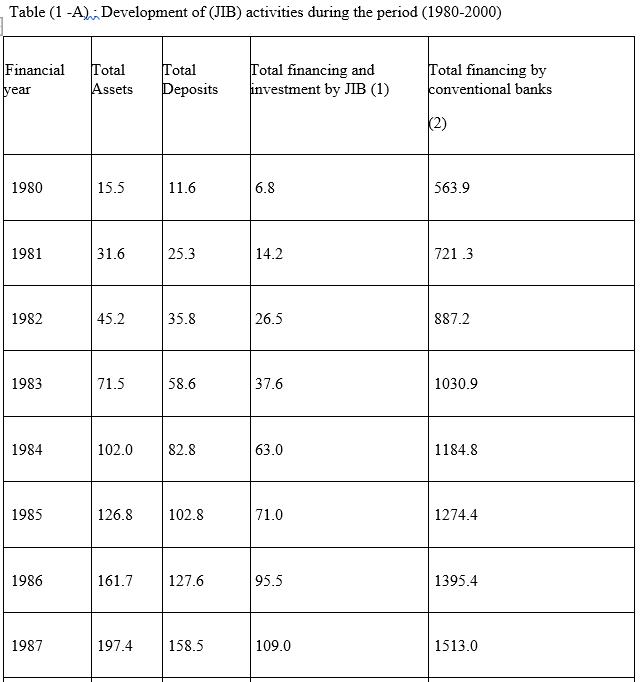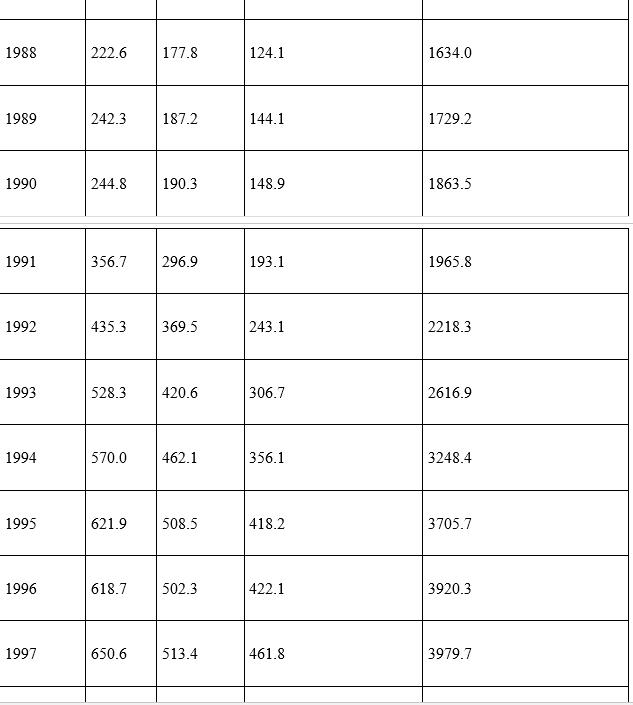Question
Abstract The current study is designed to investigate the practice of Jordan Islamic Bank (JIB) as a case study during the period 1980-2000. The Two
Abstract
The current study is designed to investigate the practice of Jordan Islamic Bank (JIB) as a case study during the period 1980-2000. The Two Stage Ordinary Least Square has been used to capture the direct and indirect effects of Jordan Islamic Bank (JIB) on the real per capita income as a proxy to economic growth. The indirect effect of total financing and investment by (JIB) as a percentage of total credit was relatively small (0.048) compared to that by conventional bank (0.50). However, this contribution should be looked at as a good start by Islamic Banks given the fact that their experience is only 20 years compared to that of Conventional Banks.
Introduction:
The history of Islamic financial institutions in Jordan is not that old. Jordan Islamic Bank (JIB) for Finance and Investment was established in 1979 with a capital of JD (4) Million divided into (4) Million shares. The Bank’s capital increased over the years to reach JD (38.5) Million in the year 2000. The Bank aims at accommodating the diversified economical and social needs of citizens in the fields of banking, financing and investment on a non- usurious basis. This is realized through the Bank (51) branches and (11) offices, widespread all over the kingdom. The Jordan Islamic Bank has been growing rapidly; the number of clients as well as the volume of funds mobilized and invested reflects this rapid growth. The success made by Jordan Islamic Bank, however, encouraged the Arab Bank Corporation (the largest financial institution in Jordan), to establish The International Arab Islamic Bank in 1996: to conduct murabaha transactions, leasing and other investment instruments according to the Islamic principles.
The entrance of such an institution is expected to increase competition and reduce the monopolistic position role of Jordan Islamic Bank as the only Islamic Bank in the country. Thus, it is expected that the performance of Jordan Islamic Bank will tend to improve even better due to the presence of this new competition.
However, we must keep in mind that Jordan Islamic Bank is facing the following obstacles (AL- Omar and Abdel-Haq, 1996):
- JIB has found, itself forced in order to make up the disadvantage of non being able to use the central bank as lender of last resort, to make most of it financing operations short or medium term, and to hold high levels of cash in notes in case of emergencies.
- Lack of enough financial instruments like bonds, for example, if the (JIB) could hold listed securities issued by high-quality corporations; this could be a substitute for cash.
- The JIB has found itself forced to take a tougher line on guarantees when it agrees to finance any project. The reason for this is that, in the past, some clients have tried to take advantage of the fact that the (JIB) is not able to charge interest on late payments of bills as conventional banks. There is no penalty for late payment under Islamic Law.
Thus, when comparing the impact of (JIB) on the economic growth of Jordan relative to conventional banks, we should not be surprised if the impact of (JIB) showed less effect. However, given the above-mentioned obstacles, this is highly expected.
The importance of this study comes from the fact that there is a serious lack of empirical studies on the evaluation of Islamic Banks performance compared to that of conventional banks. Munawar Iqbal (2001) has pointed this out in his attempt to compare the performance of Islamic Banks relative to conventional banks. Iqbal study was a serious and a leading study in empirical studies on Islamic Banking. Iqbal study includes in its sample 12 Islamic banks and 12 conventional banks to fulfill the purpose of his study. The conclusion reached by Iqbal showed that the in general Islamic banks have done fairly well during the period 1990-1998. This study will be an attempt to help in filling the existing gab in empirical studies on Islamic Banking.
2. Data and Methodology
The current study will attempt to examine the role of Jordan Islamic Bank in economic growth during the period 1980-2000. Data are gathered from the annual reports of the Jordan Islamic Bank, and the annual reports and quarterly statistical bulletins of Central Bank of Jordan. The suggested model is a simultaneous macro-econometric model consists of two behavioral equations, which will be estimated using Two Stage Ordinary Least Square methods (2SLS).
3. Development of Jordan Islamic Bank Activities
Before examining how (JIB) could contribute in the economic growth of the Jordanian economy through its financing and investment, it is worth providing an over view about the development of (JIB) during the period under consideration.
Table (1 -A) : Development of (JIB) activities during the period (1980-2000)



3.2 (JIB) Total Financing and Investment:
(JIB) total investment comprises :Murabaha financing, Musharakah and Murabaha financing, promissory note balance financing, Installments from leases ending in ownership. However, the sectoral distribution of total investment and financing operations come as follows: Agriculture, Industry and Mining, General trade, Construction and Transport.
4. Conclusion
This study was designed to investigate the practices of Jordan Islamic Bank (as a case study) during the period of 1980-2000. The Two Stage Ordinary Least Squares were used to capture the direct and indirect effects of (JIB) on the real percept income, which has been used as proxy to economic growth.
Required:
Calculate growth rates of total financing and investment by (JIB) since 1981 till 2000. Show your calculation.
Table (1-A) Development of (JIB) activities during the period (1980-2000) Financial Total year 1980 1981 1982 1983 1984 1985 1986 1987 Total Assets Deposits 15.5 31.6 45.2 71.5 102.0 126.8 11.6 25.3 35.8 58.6 82.8 102.8 161.7 127.6 197.4 158.5 Total financing and investment by JIB (1) 6.8 14.2 26.5 37.6 63.0 71.0 95.5 109.0 Total financing by conventional banks (2) 563.9 721.3 887.2 1030.9 1184.8 1274.4 1395.4 1513.0
Step by Step Solution
3.45 Rating (171 Votes )
There are 3 Steps involved in it
Step: 1
Total Financing and Investment Growth Rate Total Financing and Investment in 2000 Tot...
Get Instant Access to Expert-Tailored Solutions
See step-by-step solutions with expert insights and AI powered tools for academic success
Step: 2

Step: 3

Ace Your Homework with AI
Get the answers you need in no time with our AI-driven, step-by-step assistance
Get Started


